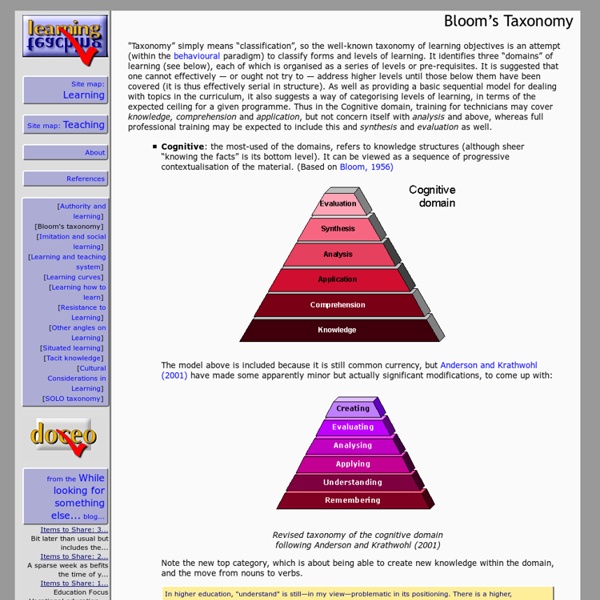Homepage | Excellence Gateway
Selecting Technologies | UNSW Teaching Staff Gateway
This page helps you choose among various technologies (not just LMSs) using two approaches: examples of learning outcomes, the kinds of learning activities that could achieve those outcomes, and how those activities could be supported by various learning technologies examples of the tools you may be interested in using and the types of activities and learning outcomes that are likely to be relevant. Table 1: Sample learning outcomes, rationales and activities The following table provides examples of learning outcomes, the kinds of learning activities that promote those outcomes, and how the activities could be supported by learning technologies. Table 2: Tools related to activities, and their contribution to learning outcomes The following table provides examples of the tools you may be interested in using and looks at the types of activities and learning outcomes that are likely to be relevant. See also on this section of the website:
Kolb's Learning Styles and Experiential Learning Cycle
by Saul McLeod published 2010, updated 2013 David Kolb published his learning styles model in 1984 from which he developed his learning style inventory. Kolb's experiential learning theory works on two levels: a four stage cycle of learning and four separate learning styles. Much of Kolb’s theory is concerned with the learner’s internal cognitive processes. Kolb states that learning involves the acquisition of abstract concepts that can be applied flexibly in a range of situations. “Learning is the process whereby knowledge is created through the transformation of experience” (Kolb, 1984, p. 38). The Experiential Learning Cycle Kolb's experiential learning style theory is typically represented by a four stage learning cycle in which the learner 'touches all the bases': 1. 2. 3. 4. Kolb (1974) views learning as an integrated process with each stage being mutually supportive of and feeding into the next. Learning Styles Learning Styles Descriptions Diverging (feeling and watching - CE/RO)
Improving student assessment
The issue Effective assessment has greater bearing on successful learning than almost any other factor. Increasing student numbers are adding to marking workloads for staff and students express more dissatisfaction with assessment and feedback than with any other aspect of their learning experience, according to the National Student Survey (2011). How technology can help Technology can enable different, new and more immediate methods of assessment, helping to reduce staff workloads whilst improving the quality of assessment and feedback for students. Resources Looking ahead Our new Assessment and Feedback programme, which runs to August 2014, is focusing on large-scale changes in assessment practice supported by technology, with a view to delivering information on tangible benefits and transferable practice.
Using differentiation in mixed-ability classes
'Differentiation' is a term that you will no doubt have encountered during your training. However, really understanding the term, and effectively putting it into practice, can be one of the greatest challenges in the NQT year. "Differentiation a big issue for NQTs, mainly because they try to differentiate everything all the time and swamp themselves with too much," says Kate Aspin, senior lecturer in education at Huddersfield University. According to the Training and Development Agency for Schools, 'differentiation' is the process by which differences between pupils are accommodated so that all students have the best possible chance of learning. There are three categories of differentiation Ideally, you should be using all three types of differentiation to accommodate the different learning styles in the classroom. Kate advises new teachers not to rely on differentiation by outcome. A practical approach to differentiation Take a practical and realistic approach to differentiation.
Teaching ESL Online 19 Successful Online English Teachers Share Their Tips and Resources for Planning Online Lessons
Thanks to everyone who contributed! I receive A LOT of emails from online teachers (and online teachers to be) about planning; namely, what they should include in their lessons and what resources they should use. As there are many areas of English and different teaching methods, there is no one-size-fits-all solution. However, there are some common practices and amazing resources that you can use in your online lessons. And as a way of celebrating the incredible teachers who create their own content so that we can use it with our students, I have put together this super post: I asked 19 online teachers for a tip or an app when it comes to lesson planning, and for them to share their resource. (At the bottom of the post there is a chance for you to add your own resources.) Gabby Wallace Make sure that each lesson has a clear takeaway. WHAT’S YOUR RESOURCE? Kieran Docherty WHAT’S YOUR RESOURCE? All of the lessons are categorised according to age appropriateness, level and topic. Mau Buchler



